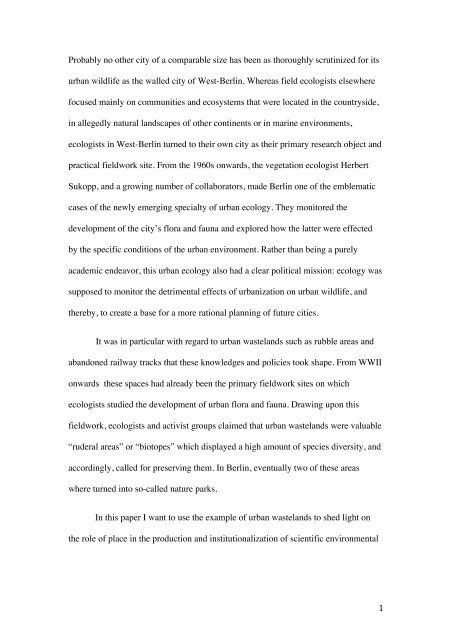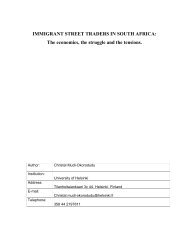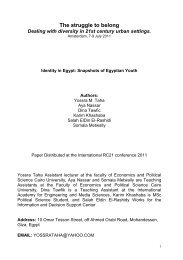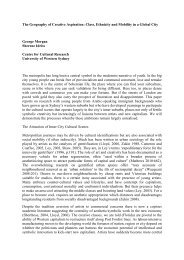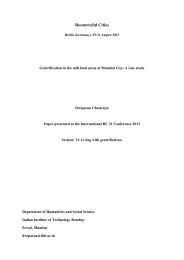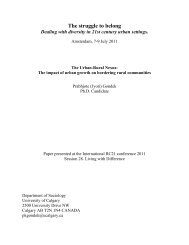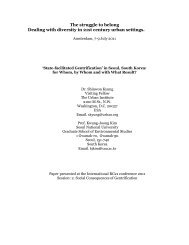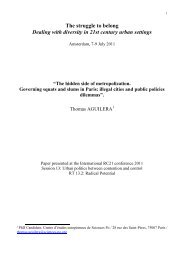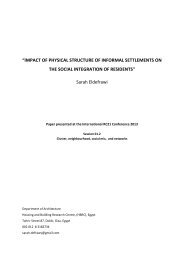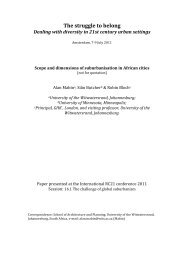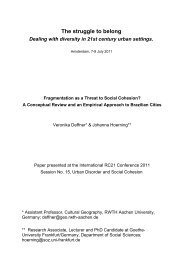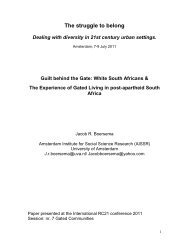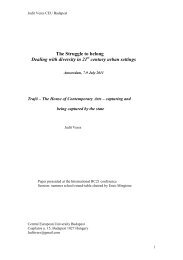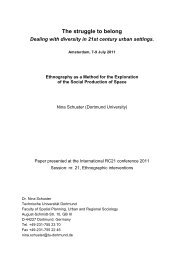The Invention of the Ruderal Area. Urban Ecology and the Struggle ...
The Invention of the Ruderal Area. Urban Ecology and the Struggle ...
The Invention of the Ruderal Area. Urban Ecology and the Struggle ...
Create successful ePaper yourself
Turn your PDF publications into a flip-book with our unique Google optimized e-Paper software.
Probably no o<strong>the</strong>r city <strong>of</strong> a comparable size has been as thoroughly scrutinized for its<br />
urban wildlife as <strong>the</strong> walled city <strong>of</strong> West-Berlin. Whereas field ecologists elsewhere<br />
focused mainly on communities <strong>and</strong> ecosystems that were located in <strong>the</strong> countryside,<br />
in allegedly natural l<strong>and</strong>scapes <strong>of</strong> o<strong>the</strong>r continents or in marine environments,<br />
ecologists in West-Berlin turned to <strong>the</strong>ir own city as <strong>the</strong>ir primary research object <strong>and</strong><br />
practical fieldwork site. From <strong>the</strong> 1960s onwards, <strong>the</strong> vegetation ecologist Herbert<br />
Sukopp, <strong>and</strong> a growing number <strong>of</strong> collaborators, made Berlin one <strong>of</strong> <strong>the</strong> emblematic<br />
cases <strong>of</strong> <strong>the</strong> newly emerging specialty <strong>of</strong> urban ecology. <strong>The</strong>y monitored <strong>the</strong><br />
development <strong>of</strong> <strong>the</strong> city’s flora <strong>and</strong> fauna <strong>and</strong> explored how <strong>the</strong> latter were effected<br />
by <strong>the</strong> specific conditions <strong>of</strong> <strong>the</strong> urban environment. Ra<strong>the</strong>r than being a purely<br />
academic endeavor, this urban ecology also had a clear political mission: ecology was<br />
supposed to monitor <strong>the</strong> detrimental effects <strong>of</strong> urbanization on urban wildlife, <strong>and</strong><br />
<strong>the</strong>reby, to create a base for a more rational planning <strong>of</strong> future cities.<br />
It was in particular with regard to urban wastel<strong>and</strong>s such as rubble areas <strong>and</strong><br />
ab<strong>and</strong>oned railway tracks that <strong>the</strong>se knowledges <strong>and</strong> policies took shape. From WWII<br />
onwards <strong>the</strong>se spaces had already been <strong>the</strong> primary fieldwork sites on which<br />
ecologists studied <strong>the</strong> development <strong>of</strong> urban flora <strong>and</strong> fauna. Drawing upon this<br />
fieldwork, ecologists <strong>and</strong> activist groups claimed that urban wastel<strong>and</strong>s were valuable<br />
“ruderal areas” or “biotopes” which displayed a high amount <strong>of</strong> species diversity, <strong>and</strong><br />
accordingly, called for preserving <strong>the</strong>m. In Berlin, eventually two <strong>of</strong> <strong>the</strong>se areas<br />
where turned into so-called nature parks.<br />
In this paper I want to use <strong>the</strong> example <strong>of</strong> urban wastel<strong>and</strong>s to shed light on<br />
<strong>the</strong> role <strong>of</strong> place in <strong>the</strong> production <strong>and</strong> institutionalization <strong>of</strong> scientific environmental<br />
<br />
1


